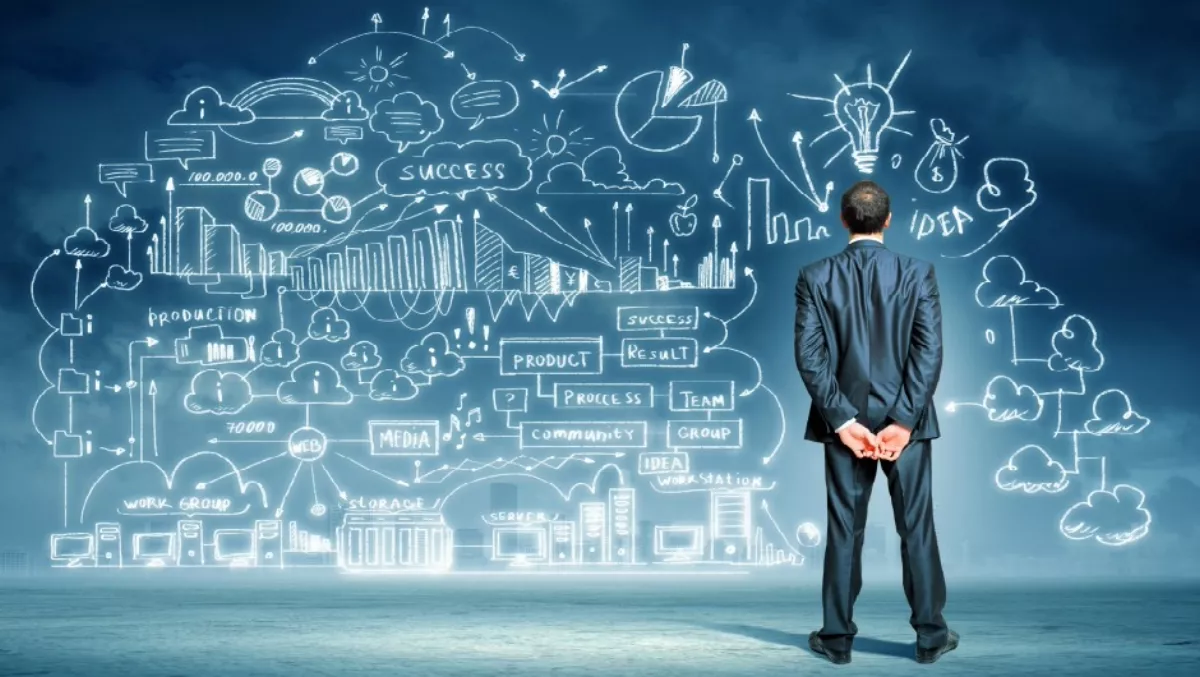
The future of productivity for business systems
James Page, Intergen's general manager, Dynamics Solutions, shares his thoughts on what he calls a "productivity paradigm shift" and his view on what productivity-enabling business systems will look like in the not-too-distant future.
How are we helping our clients achieve productivity gains with Microsoft Dynamics?
The productivity proposition and conversation has completely changed in recent years. To be honest, it's hard to answer that question just from a pure Microsoft Dynamics perspective any more – to look at how Dynamics solutions on their own help organisations achieve greater productivity. As with all of Microsoft's solutions, we need to look at how everything works together and then we can see how the sum (the overall solution) is much greater than the parts (the particular products or technology components employed, whether that's Microsoft Dynamics AX, NAV, CRM, Office 365, Enterprise Mobility Suite, Azure or any other product).
When we used to talk about productivity in the context of the Microsoft Dynamics suite, it used to be in the realms of process improvement, where we shaved a couple of minutes off various business processes and looked at business reengineering initiatives. But, while these things still happen, they're in no way the crux of the productivity story we're seeing. When I look at where we're going, and where our clients are going, there has been a step change in our thinking about productivity. I'd go as far as to say there's been a total productivity paradigm shift.
Can you explain what you mean by a "total productivity paradigm shift"?
I talked about this a bit in last year's Dynamics Day keynote (you can find the video and slides for this here). It all started to change back when we started to consider how millennials will (and now do) expect to work in our organisations. In the keynote I focused on a couple of things around the emerging workforce and consumer, how people entering the workforce have an entirely different view of what work looks like compared to the old-schoolers amongst us. They not only expect information retrieval at their fingertips, but for this information to be provided fully in the context of whatever situation they might be in.
So not only do they want to see information about an account, they want to have the ability to directly Skype contacts within the account, and do geolocation mapping of that account's address, and get traffic information feeding through because they're about to go and visit the account and don't see any point in losing time unnecessarily in their day. And not only that, before they jump in their Uber to go and visit the account, they expect to get an up-to-the-minute snapshot of all interactions and relevant information about that account. So they don't need to spend time jumping into various systems to flip back through file notes: they can apprise themselves of all the information they need in a matter of minutes.
Productivity in the context of business systems has moved from being about making a particular process a little bit more efficient to being about bringing an entire body of corporate knowledge together and making it available in a seamless and easily consumable way.
To give an example: You're going into any system – whether as an employee or a consumer – and you get really annoyed because you can't get to the next thing you'd expect. Maybe you're shopping online and you're in the shopping cart and want to know the cost of shipping. Why can't it tell me that now? And why can't I easily add something else to the cart? Or easily take something off my order? Or find out if I can bypass shipping costs altogether and pick it up from the store? Or is it in stock? And if it isn't, can I get them to put one on order for me? The scenarios are endless…
It's these sorts of things that drive productivity, where you need not just Dynamics singing and dancing and connecting with everything (which should be the norm); you also need business systems that provide contextual information that's not only pertinent to your role but also your current focus at that point in time.
Once organisations have systems that bring together all this information contextually, what's next? What does the future look like from there?
The next productivity leap from here is to learning systems: systems that recognise and anticipate the users' next information need. Not only will the system alert you to information but it will actually tell you based on what I know you are about to do, or based on the fact that I know you are going to see your top account, or your highest performing account has dropped off significantly you need to know this, this and this.
That's the paradigm shift in productivity I'm talking about. But there's some groundwork that needs to be done if organisations want to achieve this level of productivity. It is only possible if organisations seriously look at bringing together the full extent of their corporate knowledge and leveraging a connected platform that has seamless integration at its core, bringing together the various components of the Microsoft stack.
Whilst you can see isolated learning systems in play today, in fact they are all around us, the Amazon shopping experience is a prime example, productive platforms to the extent described above are two to three years away. Organisations need to get their platforms in place now so they're in a position to really make the most of the opportunities that are about to be put in front of them. It's pretty exciting!
Would you like to know more? Click here to download your free digital transformation guide.


